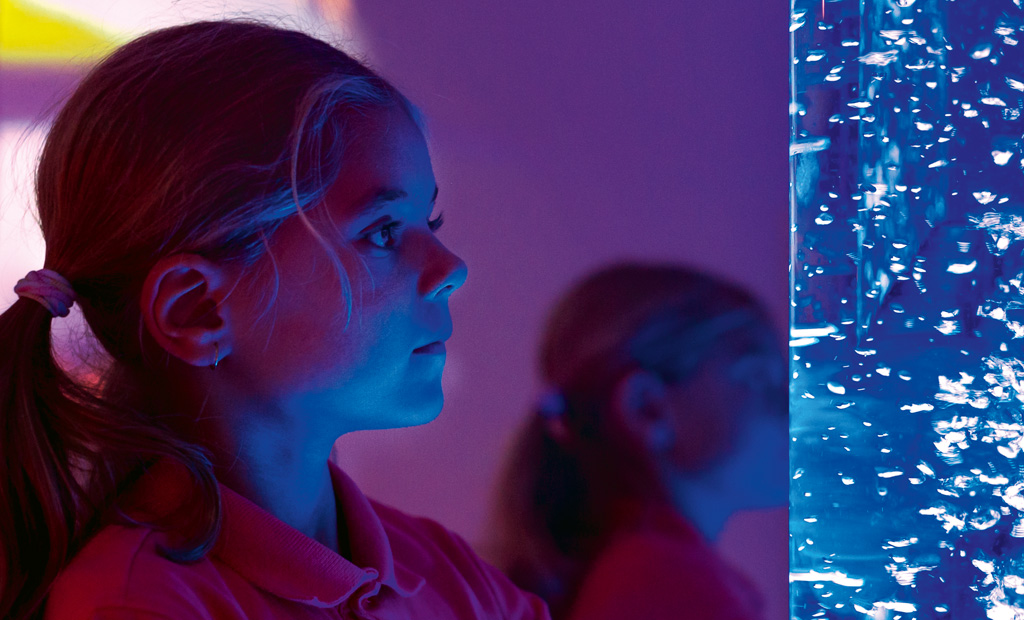What is it?
A sensory room is a space in which sensory input can be tailored to match an individual child's needs, helping them to self-regulate and be better prepared for learning and playing with others. Schools are increasingly recognising the benefits of sensory rooms not just for children with special educational needs (SEN) but the whole community. Whether pupils are dealing with anxiety, depression, bereavement, bullying, family problems, exam stress or other issues, all are likely to make use of a sensory room at some point. Providing a sensory space promotes a positive and supportive culture around mental health and wellbeing.
Did you know? Same space, different needs
A sensory room can reduce sensory overload for children who find the school environment overwhelming, but it can also provide increased sensory input for students who crave stimulation to help them regulate. For this reason, the room should be used differently with each child, rather than every piece of equipment being brought out or switched on at once. It’s important to talk to your school’s SENCO to find out what the needs of the children in your school are and to make sure that staff are trained in how to use the room effectively. Research shows the most important element in a sensory room is the person facilitating the session.
Top ten items: What to buy
You don’t need expensive equipment – sensory rooms can be created on a budget. Typical items may include:
- Bubble tube – for visual sensory stimulation and as a calming visual focal point. Or consider a fish tank, lava lamp or jellyfish lamp
- Projector – to project colours and patterns across the room. This is a useful way of changing the theme or feel of a room quickly
- Bean bag – they cocoon and provide tactile stimulation. Also a useful punchbag!
- Fibre optic spray – lay it on the floor or on a bean bag for soothing visual and tactile stimulation
- Therapy ball – these can be helpful for fidgety kids, for use in occupational therapy programmes and to provide proprioceptive (body awareness) input. Other ideas include stepping stones, a balance board or a trampette
- Rocking chair – sensory therapy rockers made from covered foam are a safe way to provide motion-based stimulation and allow soothing, repetitive movement
- Stereo or MP3 player with headphones – to play calming sounds, music or guided meditation
- Weighted blankets – these provide pressure therapy, reducing stress and anxiety
- Sensory activities and toys – examples include sand trays, sensory boxes filled with rice, fidget spinners, push poppers, putty, slime, sensory mats, texture boards, vibrating cushions and soft toys
- Aromatherapy diffuser – to bring another sensory dimension to the room.
In detail: Design it
- Seek pupils' views
- Consider the location
- Think about lighting
- Think about plug sockets
- Don't overcrowd the room – too much stuff causes overstimulation and stress. There should be enough space between objects for pupils to move around easily
- Make the space flexible – it should be easy to adapt to individual children’s needs. Have designated storage space to put away items that aren’t being used
- Use a plain carpet
- Keep walls white – projections will show up better.
Alternative ideas
Don’t have space for a sensory room? Try one of these suggestions instead:
SEN garden – ask a local garden centre for advice on plants that create a combination of sight, smell and touch experiences
Modular sensory room – companies such as RISE can build a small stand-alone unit within a matter of days
Sensory den – pop-up tents can be used as dens and are easily moved to different locations
Sensory space or ‘quiet area’ – a bookcase or curtain can be used to separate off a small area of a classroom. Install items such as cushions, blankets, headphones and fidget toys
Sensory corridor – pupils can get sensory input by stepping on a pictorial trail on the floor while walking between rooms or taking a ‘movement break’.
‘We turned our old storeroom into a safe space’
Our sensory room is located in what used to be a disused storeroom. It’s a safe space for any child in the school, not just SEN kids. If a child’s struggling in some way, or just having a bad day, they know they can go there.
What works for one child doesn’t work for another. You have to talk to the children and find out what calms them. One child hated the sound of rain, so the school put a tent in the room so he could feel safe. For my son, they put in things that interested him, like an electronics set and some decent colouring pens. He would go in with a TA for ten minutes at the start of the day to calm down and get focused before he went into the classroom.
I’d say to any PTA, if you can fundraise for sensory equipment, do it – it’s not just the kids with special needs who benefit from it. In our school no child is singled out for using the sensory room. It’s just part of everyday school life.
- Laura Rex, PTA chair, The Alderton Junior School, Loughton, Essex







